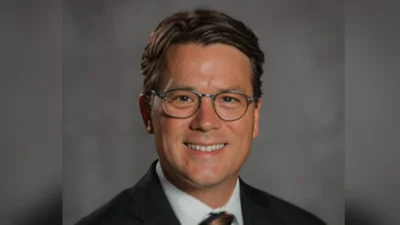Finance, Business, Networking | Pexels by Leeloo Thefirst
Finance, Business, Networking | Pexels by Leeloo Thefirst
Several phrases can be used to describe Shelby Ply, a senior in environmental engineering at Missouri S&T, including: aspiring environmental engineer, accelerated master’s degree student, decorated collegiate athlete, proud alumna of Rolla High School and equestrian aficionado.Now, she can add one more phrase to her repertoire: successful student researcher.Although this descriptor may still feel new to Ply, people may be surprised to learn this when they hear her share her knowledge in her field and see the passion in her eyes for environmental engineering.“Two years ago, my department chair, Dr. Joel Burken, asked if I would be interested in assisting with some research, and I jumped at the opportunity,” Ply says. “As a member of S&T’s volleyball team, I haven’t had as much time as I would like to be involved with other activities, but this project was perfect. I was able to set my own schedule and gain some hands-on experience in the process.” Ply assisted an environmental engineering graduate student, Anthony Oha, with his thesis project, which Burken oversaw. On April 6, she will present this research during Undergraduate Research Day at the Capitol in Jefferson City, Missouri.“This project was focused on remediating 1,4-dioxane from groundwater,” she says. “For part of the project, we were out in the field and testing tree cores from contaminated sites. However, I spent a great amount of time in the greenhouse as well.”S&T’s rooftop Baker Greenhouse at Butler-Carlton Civil Engineering Hall provides a “living lab” for students in environmental engineering as well as other disciplines. While in the Baker Greenhouse, Ply tended to hundreds of tree saplings that were eventually tested as part of the research project. The trees were exposed to the emerging pollutant 1,4-dioxane as part of a United States Department of Defense project with the University of Iowa.“One purpose of the research was to develop new ways to extract and test liquid from these trees,” she says. “Another variable we tested was to add dioxane-degrading microbes to the roots of the trees to determine how this would potentially mitigate the impact of dioxane we introduced.”Ply says the research confirmed that gas chromatography mass spectrometry (GC-MS) can work in concert with solid-phase microextraction (SPME) sampling to analyze dioxane in plant tissues, and this method could be used to evaluate bioremediation approaches.This approach of plant sampling for environmental analysis, which is termed “phytoforensics,” was initially developed at S&T but had never been applied to 1,4-dioxane before Oha developed the method along with Ply on Burken’s team.Future research at S&T will be able to build on the research team’s findings related to the mitigation of dioxane. The team is already applying the new method for samples from contaminated sites and will analyze samples this year from former military facilities as part of the DOD project.Burken, who is a Curators’ Distinguished Professor and chair of civil, architectural and environmental engineering at the university, says he has been impressed with the research team’s work. He hopes prospective students will take notice of the opportunities that are available at Missouri S&T.“I love thinking of the unique opportunities for our students,” he says. “Shelby is from Rolla, and she was able to attend S&T and work with Tony, who is a Nigerian immigrant and an amazing researcher.”“She has earned multiple honors as a collegiate volleyball player, and now she will present her research at the state capitol,” he says. “She has been on a remarkable journey, and yet she can still stop by her family’s farm and ride her horse on the weekend.”Ply says she is grateful she was able to assist with Oha’s research project, and she knows the skills she developed will be beneficial in her career.For now, Ply says she is keeping her options open for after she leaves S&T. She will finish her undergraduate degree this spring, and then she plans to finish her master’s degree within the next year as part of the S&T Grad Track pathways program for accelerated BS+MS completion.“I am open to anything,” she says. “The great thing about my education at Missouri S&T is I feel like I could launch an amazing career in a variety of positions related to environmental or civil engineering.”Ply says her career may eventually take her to St. Louis, Kansas City or perhaps another city, but she is currently enjoying being closer to her family in Rolla, including her quarter horse, Carmella.For more information about Missouri S&T’s environmental engineering program, visit care.mst.edu.
Original source can be found here.


 Alerts Sign-up
Alerts Sign-up